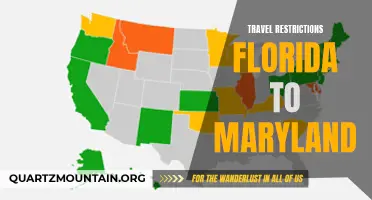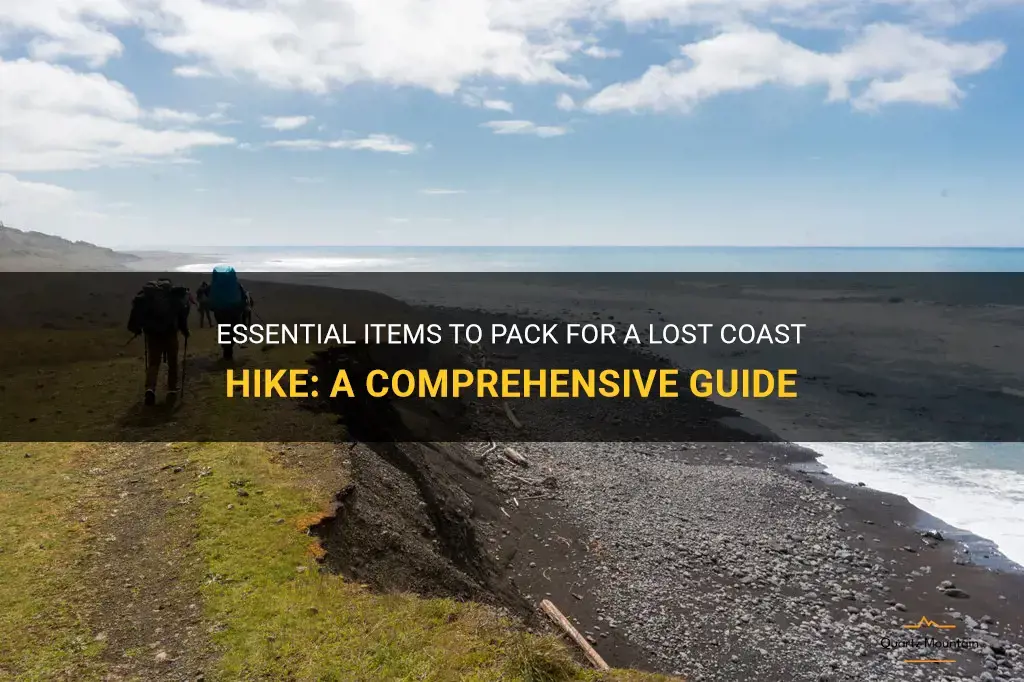
Embarking on a hiking adventure along California's stunning Lost Coast is a dream for outdoor enthusiasts and nature lovers. With its rugged beauty, remote beaches, and towering cliffs, the Lost Coast promises an unforgettable experience. However, it is crucial to be well-prepared before setting foot on this challenging trail. In this comprehensive guide, we will highlight the essential items you need to pack for a Lost Coast hike to ensure your safety, comfort, and enjoyment throughout your journey. From proper footwear and clothing to navigation tools and emergency supplies, we've got you covered for a successful trek through this breathtaking wilderness. So grab your backpack, lace up your boots, and let's delve into the must-have items for your Lost Coast adventure!
What You'll Learn
- What are the essential items to pack for a Lost Coast hike?
- Can you provide a detailed packing list for a multi-day Lost Coast hike?
- Are there any specific clothing or gear considerations for hiking the Lost Coast?
- What are some tips for efficiently packing food and water for a Lost Coast hike?
- Are there any recommended safety items or emergency supplies that should be included in a Lost Coast hiking pack?

What are the essential items to pack for a Lost Coast hike?
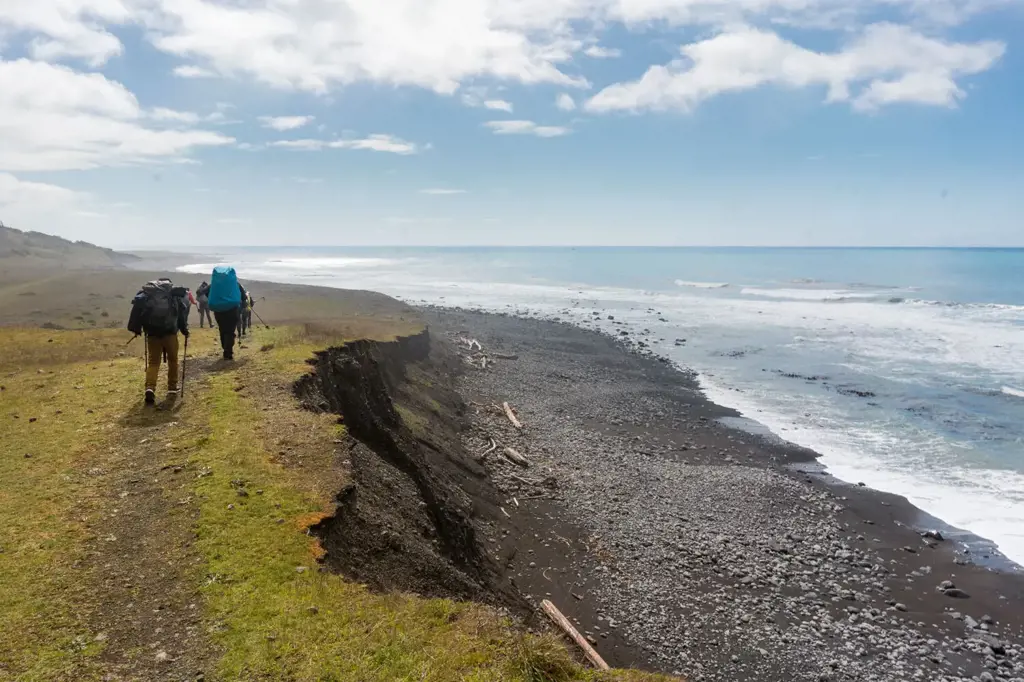
The Lost Coast Trail is a stunning hike along California's rugged coastline. It is known for its remote and challenging terrain, where hikers have the opportunity to disconnect from civilization and immerse themselves in nature. However, due to the trail's isolated location and varying weather conditions, it is essential to pack the right gear for a safe and enjoyable experience. Here are some essential items to consider when preparing for a Lost Coast hike:
- Backpack: A sturdy backpack with a comfortable fit is crucial for carrying all your gear. Look for one with adjustable straps and plenty of pockets for organization.
- Navigation tools: Due to the rugged and unmarked nature of the trail, navigation tools such as a map, compass, and GPS device are essential. Familiarize yourself with the route before starting the hike and make sure to carry these tools to avoid getting lost.
- Water filtration system: The Lost Coast Trail offers limited access to fresh water sources. Carrying a reliable water filtration system, such as a water filter or purification tablets, is essential for refilling your water bottles along the way. This will ensure you stay hydrated and avoid any waterborne illnesses.
- Shelter: The weather along the Lost Coast Trail can be unpredictable, ranging from heavy rain to strong winds. Packing a lightweight and durable tent or tarp is crucial for providing shelter and protecting yourself from the elements. Make sure your shelter is also easy to set up and can withstand the coastal conditions.
- Sleeping gear: A warm and comfortable sleeping bag, along with a sleeping pad, is essential for a good night's rest on the trail. The temperature can drop significantly at night, so choose a sleeping bag with an appropriate temperature rating for the season you'll be hiking in.
- Clothing: Layering is key when it comes to clothing for the Lost Coast Trail. The weather can fluctuate throughout the day, so pack lightweight and moisture-wicking base layers, insulating mid-layers, and a waterproof outer layer. Don't forget to bring a hat, gloves, and extra socks to protect yourself from the elements.
- Food and cooking equipment: Plan your meals in advance and pack lightweight, high-energy foods such as trail mix, energy bars, and dehydrated meals. Don't forget to bring a stove, cooking pot, and utensils for preparing your meals along the trail.
- First aid kit: Accidents can happen on any hike, so it's essential to carry a well-stocked first aid kit. Include items such as bandages, antiseptic wipes, pain relievers, blister treatment, and any necessary prescription medications.
- Personal safety items: In addition to a first aid kit, it's important to bring other personal safety items such as a whistle, headlamp, and a multi-tool. These items can come in handy in case of emergencies or unexpected situations on the trail.
- Leave no trace supplies: The Lost Coast Trail is a pristine wilderness area, and it's important to leave no trace of your visit. Bring supplies such as biodegradable soap, a trowel for burying waste, and lightweight garbage bags to pack out all your trash.
Before embarking on a Lost Coast hike, it's also essential to do thorough research and consult experienced hikers or park rangers for any specific recommendations or regulations. By packing these essential items and being prepared for the challenges of the trail, you can have a safe and unforgettable experience hiking the Lost Coast.
The Ultimate Checklist for an Unforgettable Australia Surf Trip
You may want to see also

Can you provide a detailed packing list for a multi-day Lost Coast hike?
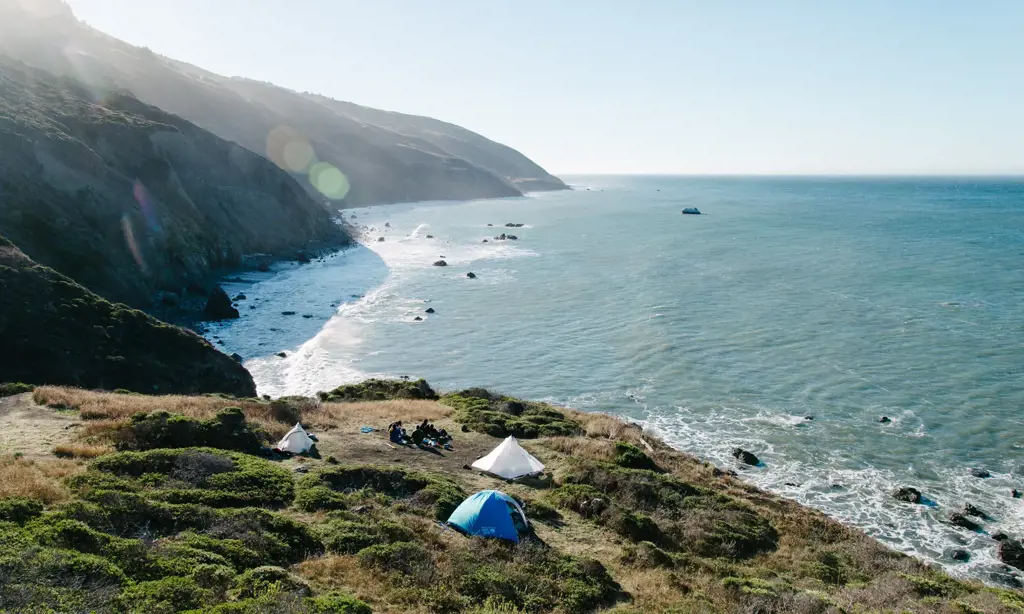
Heading: Can you provide a detailed packing list for a multi-day Lost Coast hike?
Introduction:
Planning for a multi-day Lost Coast hike requires careful preparation, especially when it comes to packing. The Lost Coast trail, located in Northern California, is known for its rugged and challenging terrain, unpredictable weather, and remote backcountry experience. To ensure a successful and safe journey, it is crucial to pack the right gear and essentials. In this article, we will provide a detailed packing list for a multi-day Lost Coast hike, taking into consideration the specific challenges and needs of this unique trek.
Shelter and Sleeping Gear:
- Lightweight tent: Choose a tent that is sturdy, lightweight, and provides protection from wind and rain.
- Sleeping bag: Opt for a sleeping bag with a temperature rating suitable for the prevailing weather conditions.
- Sleeping pad: Carry a comfortable and lightweight sleeping pad for insulation and cushioning.
Clothing:
- Base layers: Pack moisture-wicking and quick-drying base layers to help regulate body temperature.
- Insulating layers: Bring warm fleece or down jackets, as temperatures can drop significantly in the evenings.
- Waterproof outer layers: Have a good waterproof and windproof jacket and pants to protect against rain and harsh winds.
- Hiking pants/shorts: Look for lightweight, quick-drying pants or shorts with moisture-wicking properties.
- Hiking socks: Bring several pairs of moisture-wicking socks to keep your feet dry and prevent blisters.
- Hat and gloves: Protect your head and hands from cold and sunburn.
Footwear:
- Hiking boots: Invest in quality, waterproof hiking boots with ankle support for navigating challenging terrain.
- Camp shoes: Carry a lightweight pair of sandals or sneakers to provide relief for your feet at camp.
Backpack and Organization:
- Backpack: Choose a backpack that fits your body well and has a capacity suitable for multiple days of hiking.
- Dry bags/compression sacks: Use dry bags or compression sacks to keep your gear organized and protected from water and moisture.
Food and Water:
- Water filtration system: Bring a reliable water filter or purification tablets to treat water from natural sources.
- Water bottles/bladder: Carry enough water bottles or a hydration bladder to stay hydrated during the hike.
- High-energy food: Pack lightweight, high-energy snacks, like nuts, energy bars, and dried fruits, to sustain you throughout the hike.
Navigation and Safety:
- Topographic map and compass: Familiarize yourself with the trail and carry a map and compass for navigation.
- GPS device: Bring a GPS device or a smartphone with offline maps to track your progress on the trail.
- First aid kit: Include essentials like adhesive bandages, pain relievers, antiseptic wipes, and moleskin for blisters.
- Emergency shelter/bivy: Carry a lightweight emergency shelter or bivy sack in case of unforeseen circumstances.
- Bear canister/bear bag: Follow the regulations and use a bear canister or bear bag to store food and prevent wildlife encounters.
A multi-day Lost Coast hike requires thoughtful planning and preparation. By following this detailed packing list, you can ensure that you have the necessary gear and essentials to tackle the challenges of this rugged trail. Remember to choose high-quality, lightweight, and weather-appropriate equipment and pack strategically to distribute weight evenly in your backpack. With the right gear and proper preparation, you can embark on a safe and enjoyable adventure along the beautiful and remote Lost Coast.
Essential Items to Pack for Traveling with Mom
You may want to see also

Are there any specific clothing or gear considerations for hiking the Lost Coast?
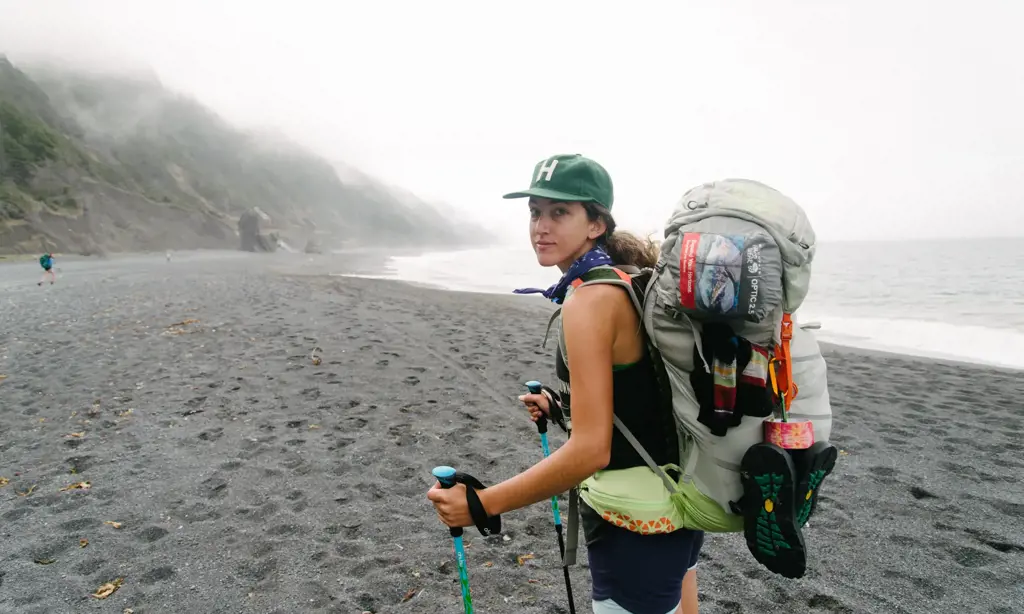
When planning a hiking trip to the Lost Coast, it is important to consider the specific clothing and gear needed for this unique environment. The Lost Coast is a rugged and remote stretch of coastline in Northern California, known for its unpredictable weather and challenging terrain. Proper clothing and gear can make a significant difference in your comfort and safety while hiking in this area.
One of the most important considerations when it comes to clothing is layering. The weather on the Lost Coast can change rapidly, so it is essential to be prepared for a wide range of conditions. Start with a moisture-wicking base layer to keep you dry and comfortable. This can be a lightweight, long-sleeved shirt and pants made from materials such as merino wool or synthetic fabrics like polyester. These materials will help to wick away sweat and keep you dry even if it rains or you encounter water during your hike.
On top of your base layer, add a mid-layer for insulation. This can be a fleece or a lightweight down jacket, depending on the temperature. This layer will help to trap heat and keep you warm in colder conditions. It is also important to have a waterproof or water-resistant outer layer to protect you from rain, wind, and spray from the ocean. Look for a breathable and durable rain jacket and pants made from materials such as Gore-Tex.
In terms of footwear, a sturdy pair of hiking boots is essential. The terrain on the Lost Coast can be uneven and rocky, so you'll want boots with good ankle support and grip. Look for boots that are waterproof or water-resistant to keep your feet dry. It is also a good idea to break in your boots before your trip to avoid blisters and discomfort on the trail.
Other essential gear includes a backpack, water bottles or a hydration system, a map and compass or GPS device, and a first aid kit. In addition, it is important to be prepared for the possibility of encountering wildlife, such as bears or mountain lions, by bringing bear spray and making noise to alert animals to your presence.
It is also crucial to pack enough food and water for your hike, as there are limited opportunities for resupply along the Lost Coast. Plan to carry at least two liters of water per person per day and pack lightweight, high-energy snacks and meals that do not require refrigeration.
Lastly, remember to check the weather forecast before your trip and adjust your clothing and gear accordingly. The Lost Coast is known for its fog and cool temperatures, so it is a good idea to bring a hat, gloves, and extra layers to stay warm. Sun protection, such as sunscreen, a hat, and sunglasses, is also essential, as the sun can be intense even on overcast days.
By considering these specific clothing and gear recommendations, you can ensure a safe and enjoyable hiking experience on the Lost Coast. Be prepared for a range of weather conditions, rugged terrain, and limited amenities, and you'll be ready to tackle this beautiful and challenging coastal trail.
The Ultimate Guide to Packing for a Family RV Trip
You may want to see also

What are some tips for efficiently packing food and water for a Lost Coast hike?
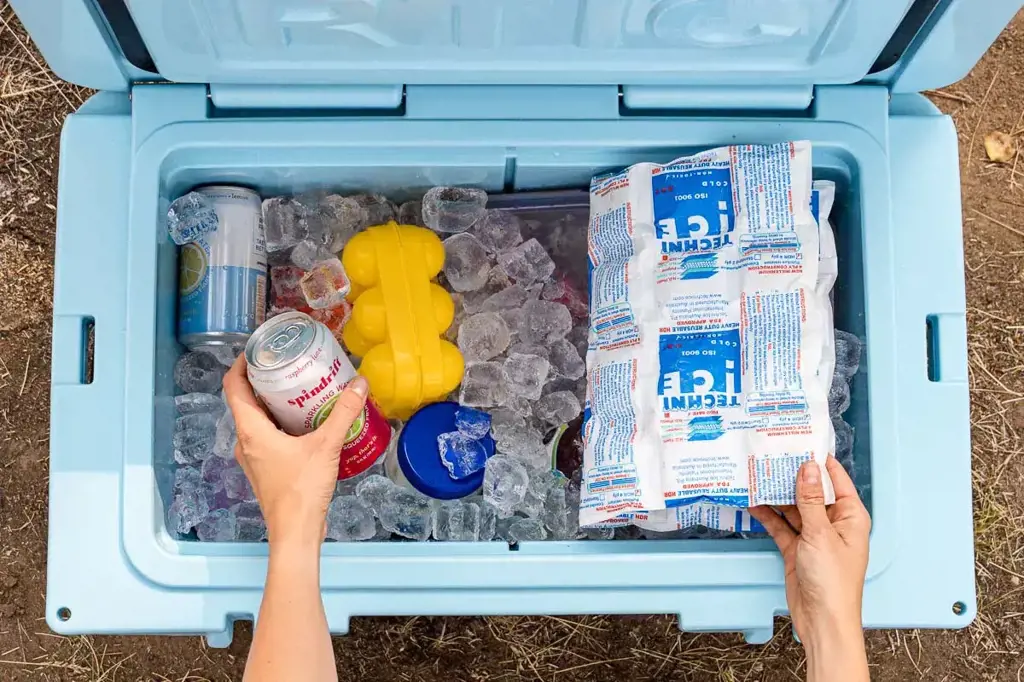
When embarking on a Lost Coast hike, it is crucial to pack food and water efficiently to ensure that you have enough sustenance to sustain you throughout your journey. The Lost Coast, located in Northern California, is a rugged and remote stretch of coastline that offers breathtaking scenery and challenging hiking trails. Here are some tips for efficiently packing food and water for your Lost Coast hike:
- Plan your meals and snacks: Before packing your food, take some time to plan out your meals and snacks for each day of your hike. Consider the duration of your trip and the amount of physical activity you will be doing. It is important to have a balance of carbohydrates, protein, and fats to provide you with sustained energy. Additionally, choose lightweight and non-perishable foods that are easy to pack, such as dehydrated meals, trail mix, energy bars, and dried fruits.
- Pack lightweight and compact meals: Since you will be carrying your food in your backpack, it is important to pack meals that are lightweight and compact. Look for dehydrated meals that can be rehydrated with boiling water. These meals are not only lightweight but also take up minimal space in your backpack. Avoid packing canned foods or anything bulky that will weigh you down and take up valuable space in your pack.
- Consider calorie density: When selecting food for your hike, consider the calorie density of each item. Since you will be burning a high number of calories during your hike, it is important to pack foods that will provide you with sufficient energy. Look for high-calorie foods such as nuts, nut butter, cheese, and energy bars. These foods are not only nutritious but also packed with calories to keep you fueled throughout your hike.
- Use lightweight containers: Opt for lightweight and collapsible containers to carry your meals and snacks. Avoid using heavy and bulky containers that will add unnecessary weight to your pack. Look for containers that are specifically designed for backpacking and are made of lightweight and durable materials.
- Utilize water sources along the trail: One of the most important considerations when hiking the Lost Coast is water availability. While it is essential to pack enough water to sustain you between water sources, it is also important to utilize the water sources along the trail. Carry a water filter or purification tablets to treat water from creeks and streams. This will allow you to refill your water bottles and stay hydrated without carrying excessive amounts of water.
- Pack a water bladder: Consider investing in a hydration system such as a water bladder. These systems allow you to easily carry a large amount of water without taking up valuable space in your pack. Most water bladders have a hose that attaches to your backpack strap, allowing you to drink water on the go without stopping to take off your pack.
- Consider electrolyte replacement: When hiking in hot and challenging conditions, it is important to replenish electrolytes lost through sweat. Pack electrolyte tablets or powders to add to your water. These will help prevent dehydration and keep your body functioning optimally.
- Practice Leave No Trace principles: When packing food and water for your Lost Coast hike, it is crucial to follow Leave No Trace principles. This means packing out all of your trash, including food wrappers and containers. Do not leave any food or waste behind, as this can harm wildlife and disrupt the delicate ecosystem of the area.
By efficiently packing food and water for your Lost Coast hike, you can ensure that you have enough sustenance to keep you energized and hydrated throughout your journey. Planning your meals and snacks, selecting lightweight and compact foods, and utilizing water sources along the trail are key strategies to optimize your packing. Remember to follow Leave No Trace principles to preserve the natural beauty of the Lost Coast.
Essential Packing Guide for Cruise Ship Jobs
You may want to see also

Are there any recommended safety items or emergency supplies that should be included in a Lost Coast hiking pack?
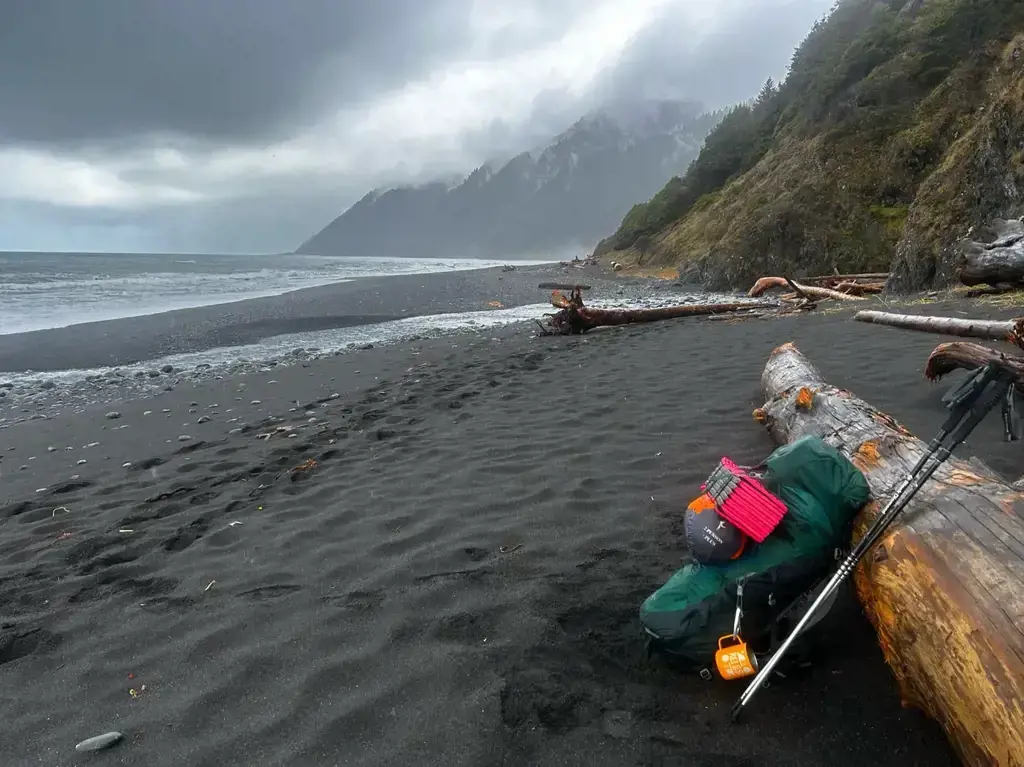
When embarking on a hiking trip along the Lost Coast, it is crucial to be prepared for any unexpected situations that may arise. In order to ensure your safety, it is important to have the necessary safety items and emergency supplies in your hiking pack. Here are some recommendations to make sure you are well-prepared for your Lost Coast adventure.
- First Aid Kit: Carrying a well-stocked first aid kit is essential for any hiking trip. It should include items such as bandages, antiseptic ointment, tweezers, pain relievers, and any necessary prescription medications. In case of minor injuries or medical conditions, having a first aid kit readily available can make all the difference.
- Navigation Tools: The Lost Coast is known for its rugged terrain and often confusing trails. Having reliable navigation tools such as a map, compass, and GPS device is crucial for staying on the right path. Make sure you know how to use these tools and have a backup plan in case the batteries run out on your electronic devices.
- Water Purification System: While there are water sources along the Lost Coast, it is always a good idea to have a water purification system with you. This can include water treatment tablets, a water filter, or a portable water purifier. By purifying the available water sources, you can ensure that you have a safe and reliable supply of drinking water throughout your hike.
- Emergency Shelter: In case you get stranded or face bad weather conditions, having an emergency shelter is crucial. This can include a lightweight tent, a bivy sack, or even a tarp that can provide protection from rain, wind, or extreme temperatures. It is always better to be prepared for unexpected circumstances.
- Personal Locator Beacon: A personal locator beacon (PLB) can be a lifesaver in emergency situations. These devices use satellite technology to send out a distress signal, alerting authorities of your location. While it is not a substitute for proper preparation, having a PLB can greatly increase your chances of survival in case of an emergency.
- Extra Food and Clothing: It is important to pack extra food and clothing in case of unexpected situations, such as getting lost or delayed. High-calorie, non-perishable food items are ideal, as they provide a good source of energy. Additionally, packing extra warm clothing, including a hat, gloves, and a waterproof jacket, can help keep you warm in case of inclement weather.
- Communication Devices: Carrying a fully charged cell phone, a portable charger, and a whistle can be crucial in helping you seek assistance if needed. Cell phone signals may be limited along the Lost Coast, but having a backup communication device can still be helpful in case of an emergency.
Remember, the Lost Coast can be challenging, and being prepared is key to ensuring your safety. Make sure to check the local weather conditions, inform someone about your hiking plans, and always be aware of your surroundings. By carrying the recommended safety items and emergency supplies, you can have a safe and enjoyable hiking experience along the Lost Coast.
Essential Items for a Backpacking Trip in Japan
You may want to see also
Frequently asked questions
For a Lost Coast hike, it is important to pack layers of clothing to accommodate the changing weather conditions. It is recommended to pack a waterproof and breathable jacket, quick-drying hiking pants, moisture-wicking shirts, and comfortable hiking socks. Additionally, bring a hat or beanie to protect yourself from the sun or cold weather.
The best footwear for a Lost Coast hike is sturdy and comfortable hiking boots or shoes with good traction. The terrain can be uneven and rocky, so it is important to have ankle support and grip. Waterproof or water-resistant footwear is also ideal as there may be stream crossings or wet conditions along the trail.
Essential gear for a Lost Coast hike includes a backpack, a reliable map or navigation system, a headlamp or flashlight, a first aid kit, a whistle, and a multi-tool. It is also important to bring plenty of water, as there may be limited water sources on the trail. Additionally, pack sunscreen, sunglasses, and insect repellent to protect yourself from the elements.
If you plan on camping during your Lost Coast hike, it is essential to pack a lightweight tent or hammock, a sleeping bag, a sleeping pad, and a camping stove or fuel for cooking. It is also important to bring bear canisters or bear-proof bags to store your food and scented items, as bears are known to inhabit the area. Don't forget to pack a water filter or purification tablets if you plan on using water from natural sources.
In addition to the necessary clothing, footwear, gear, and camping equipment, there are a few extra items you may consider bringing on a Lost Coast hike. These include a camera to capture the breathtaking scenery, a portable charger to keep your electronics powered, a trekking pole or hiking stick for added stability, and a lightweight, quick-drying towel for drying off after swimming or bathing in natural pools or the ocean.






